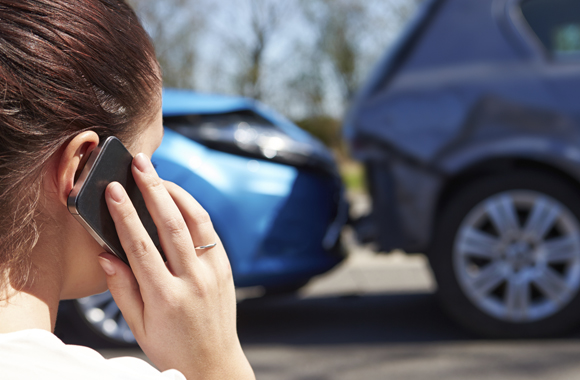How to help your fleet drivers avoid a rear-end collision
02/08/2016 00:00:00by Paul Fincham02/08/2016 00:00:00How to help your fleet drivers avoid a rear-end collisionBluedrop Services

The rear-end collision is the most frequent type of crash involving vehicles, with Admiral confirming there are around 420,000 rear end crashes over a period of 12 months within the UK. Rear-end crashes tend to occur at a relatively low speed, and any injuries suffered in these instances are usually minimal. However, many result in whiplash claims and often the damage to the vehicle can be devastating and far greater than you would expect from a little knock. All this can leave you experiencing unwanted Vehicle Off Road (VOR) time in addition to potential claims on your fleet insurance.
 Here are 10 ways that you can help your fleet drivers avoid a rear-end collision.
Here are 10 ways that you can help your fleet drivers avoid a rear-end collision.- Make sure that your drivers are always aware of the traffic ahead. They need to be looking further ahead than the vehicle in front so they can allow for slowing or stopped traffic, giving them time to brake as well as the traffic behind them.
- Drivers should check their mirrors regularly, every five to eight seconds, looking again when slowing, stopping or turning. Your drivers should be aware of the vehicles behind them and if they are also stopping. Keep checking mirrors while stopped for any fast approaching vehicles, and allow space for an escape route. There are times when a driver behind could unfortunately be distracted and not have seen the stopped traffic ahead.
- As your driver slows to a stop, they should be thinking of an escape route. They need to be considering the hard shoulder, pavement, curb, other lane, etc. and if this is free from traffic. Drivers should leave space between themselves and the stopped vehicle in front to allow for such an escape route and avoid locking themselves into a potential danger zone.
- Drivers should always approach traffic lights by gradually slowing, forcing the vehicle behind to do the same and limiting the chances of a sudden slam on the brakes and reactions to be fraught. Often this approach can mean that their vehicle doesn’t actually need to stop at all once closer to the lights, but it also means that fuel will be saved and the wear of the tyres and brakes will be protected.
- Brake lights should be checked regularly to ensure they are working as this is the main signal to traffic behind that they are coming to a stop. This can always be done in the reflection of a shop window.
- When in motion drivers should be keeping a good safe distance between themselves and the vehicle in front which allows for slow controlled braking when needed. There is always the potential for a sudden emergency braking situation, such as stopping for an animal, which will require a good distance to avoid a rear-end collision. Drivers need to understand that tailgating is not an option to be tolerated. Whilst drivers should be aware of this it is perhaps a good reminder to ask them to check the 3 second rule. This is where you choose a fixed point between your vehicle and the one in front, such as a road sign or building, and if you reach it before you count to three then you are following too closely.
- Drivers should always avoid harsh braking to warn off other drivers that are following them too closely behind. Instead it is important to either slow gradually in the next available passing area or pull in at a safe spot to let them go by.
- Training should be provided in handling the vehicle in different weather conditions, or when bearing different loads if this is appropriate. This can dramatically change stopping distances particularly for larger vehicles.
- Whilst following larger vehicles drivers also need to be aware of allowing greater distances due to the fact that they block the view ahead, have more potential blind spots and require additional lane space to make turns.
- Finally AEB (Autonomous Emergency Braking) is considered a life-saving technology that has been shown in studies to reduce the likelihood of a front-to-rear crash by almost 40%. Such technology is well worth considering when you are choosing your fleet vehicles.
Return to blog menuWant to find out more about Bluedrop's Fleet Insurance?
Call our friendly team now for the right insurance cover - at the best price
+441489780491
Calls recorded for training and quality.



 Privacy and Cookie Policy
Privacy and Cookie Policy